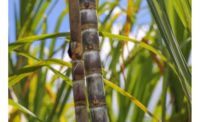When several consumer interests intersect—reduced calories, clean-label eating, good taste and texture—snack and bakery producers can find it vexing to formulate products that deliver. There are numerous alternatives to conventional cane sugar available, but they may not perform well, and consumers often look to steer clear from artificial sweeteners in their food purchases.
James Kappas, vice president of specialty ingredients at ASR Group, recently spoke with Snack Food & Wholesale Bakery about tagatose, a rare sugar that can help producers in their quest to offer consumers with options that can reduce calories without reducing taste.
Jenni Spinner: Could you please tell us a little bit about how consumer perceptions around 'natural' and 'artificial' sweeteners have evolved in recent years?
James Kappas: Consumers’ desire for sweet foods and beverages will never fade, but the conversation around sweeteners continues to evolve. We’ve recently seen the conversation shift from artificial vs. natural sweeteners to nutritive to non-nutritive sweeteners.
JS: The World Health Organization (WHO) recently came out with a statement advising against the use of non-sugar sweeteners for weight control. Could you please tell us a bit about that, and what it means for snack and bakery producers?
JK: The reactions to the WHO’S statement have been varied, but the WHO’s recommendation does not apply to low-calorie sugars, like tagatose, which is a rare sugar that contains calories and therefore is not considered a non-sugar sweetener. For companies looking to formulate for reduced sucrose, tagatose is a viable alternative since it is a nutritive sweetener and falls outside the scope of the WHO’s recommendations.
JS: Please tell us about tagatose—what it is, and what advantages it might provide to producers looking to strike the tricky balance between good taste, reduced calorie content and cleaner labels.
JK: Tagatose is a lower-calorie rare sugar that tastes and performs closer to sugar than other alternatives. Found naturally in a variety of foods, tagatose is 90% as sweet as sugar but with 60% fewer calories, so it’s a great option for manufacturers looking to formulate for lower calories. Unlike many sweetening alternatives, tagatose can be used as the sole sweetener in a variety of foods, eliminating the need for non-nutritive sweeteners and promoting cleaner labels. In fact, our testing shows that products containing tagatose are nearly identical to their sugar-containing counterparts in taste, appearance, and texture.
Tagatose also offers a number of other advantages as a sweetener. It has a low GI of 3, it has been shown to have prebiotic effects, and it does not promote tooth decay. It also has a number of certifications that are important to today’s consumer, including non-GMO Project Verified, Kosher and Halal certified, and Ketogenic certified. The investments from major food and beverage companies like Hershey, Symrise, and ASR Group in Bonumose, the producer of tagatose, are a testament to the massive potential of tagatose.
JS: What type of products is tagatose best suited for?
JK: Tagatose is a highly sought-after ingredient that can be applied to numerous applications from frozen desserts and confectionary to baked goods and ready-to-eat cereals. Its ability to sweeten dishes with fewer calories than traditional sugar without compromising taste, texture or function makes it a valuable solution for many food and beverage companies.
JS: Are there any challenges to using tagatose in snacks and baked goods - please talk any issues or considerations associated with using it as an ingredient.
JK: Unlike many sugar alternatives, tagatose promotes browning in baking applications, so manufacturers will need to experiment with the correct temperature and bake time to optimize the performance of tagatose in their products. Manufacturers also need to be cognizant of FDA approved usage levels which vary by category. Fortunately, tagatose’s approved usage levels are generally higher than other alternatives, such as allulose. For example, tagatose’s usage levels are three times higher for applications such as breakfast cereals, confectionery and frostings.
JS: Do you have any advice for a producer considering tagatose in their products?
JK: Our testing shows that free-flowing granulated tagatose is one of the closest substitutes for sucrose currently available with its sucrose-like sweetness and no bitter aftertaste. That said, each product has its own nuances, and we encourage interested manufacturers to contact us with their specific questions about using tagatose in their products as we offer expert application support.





